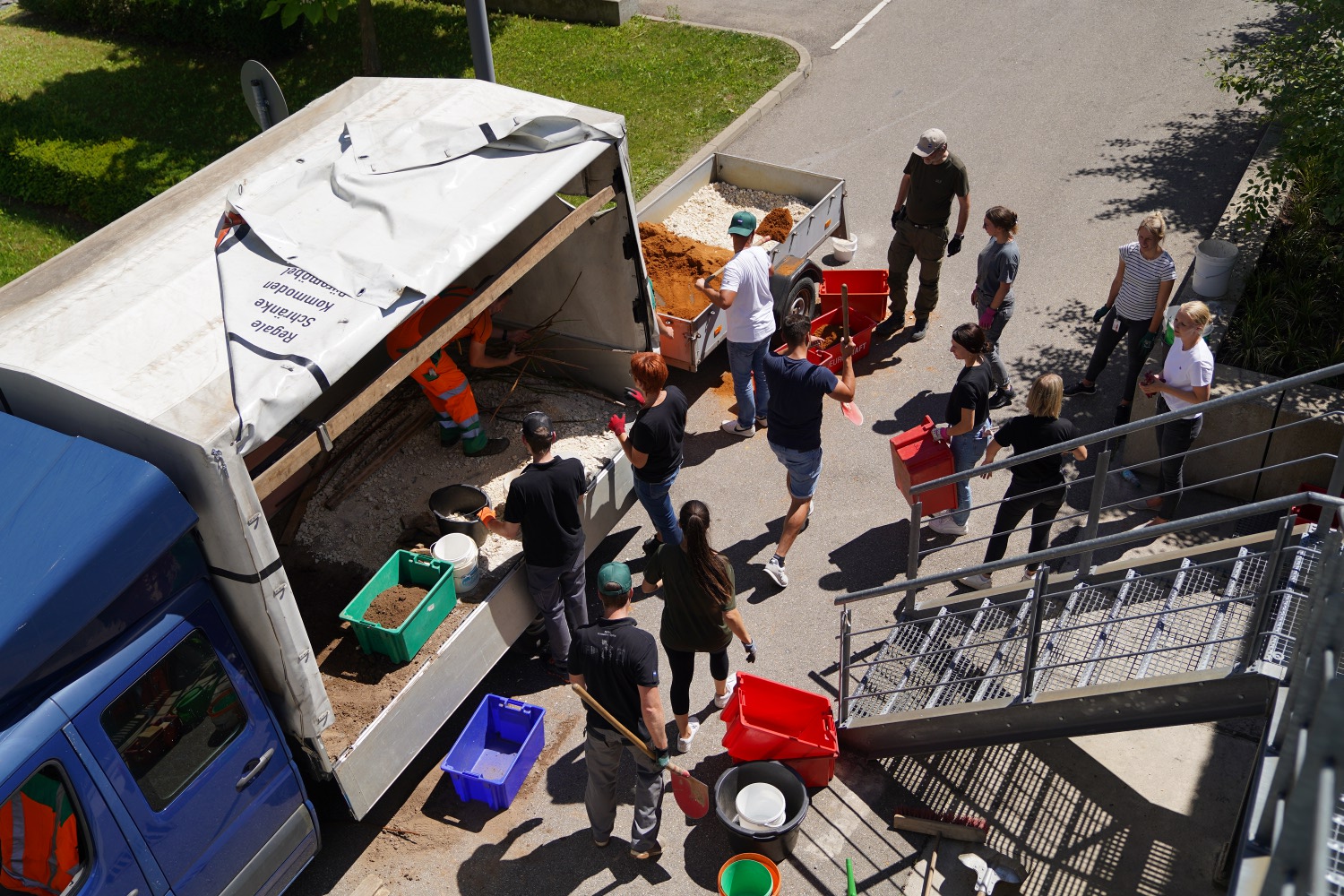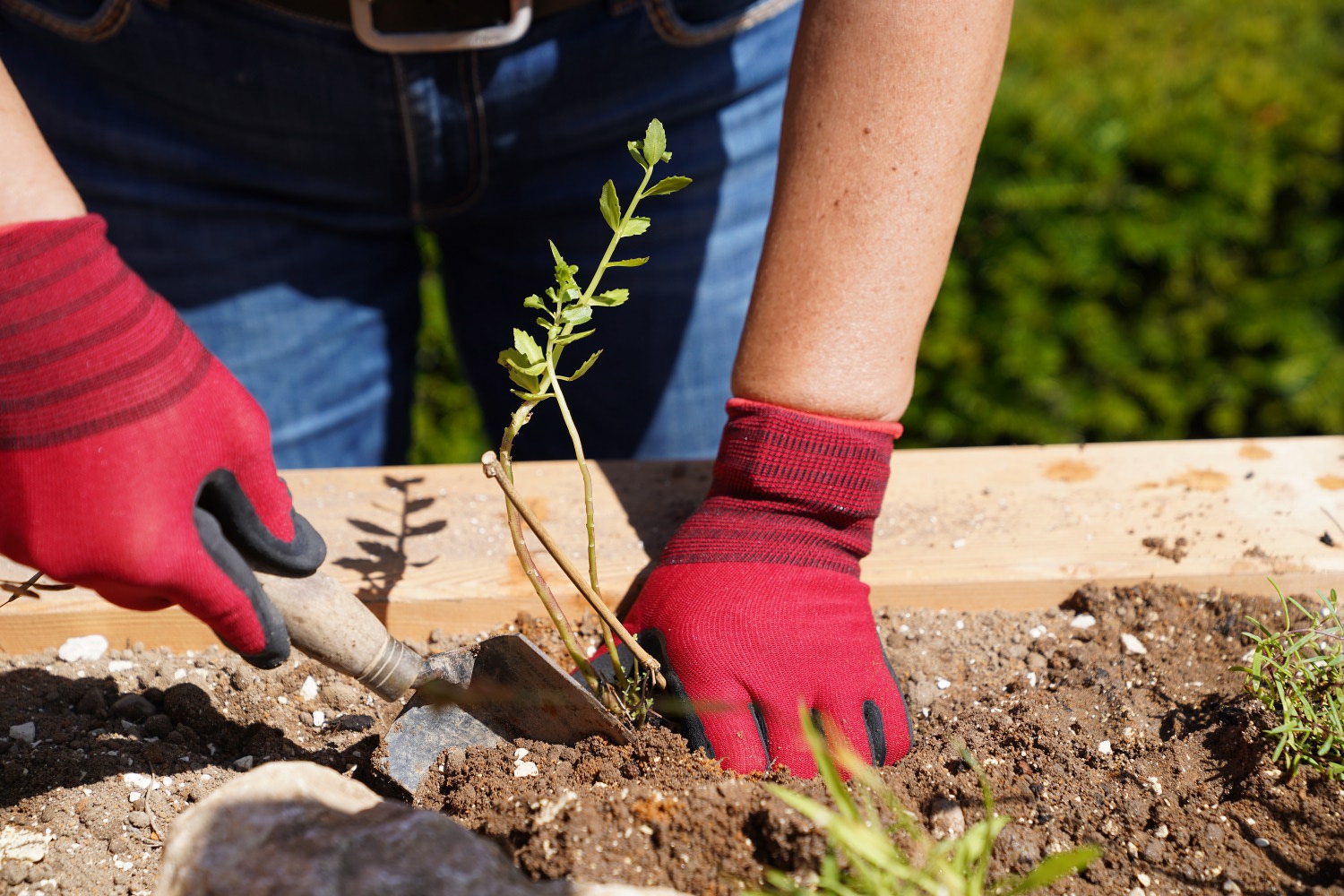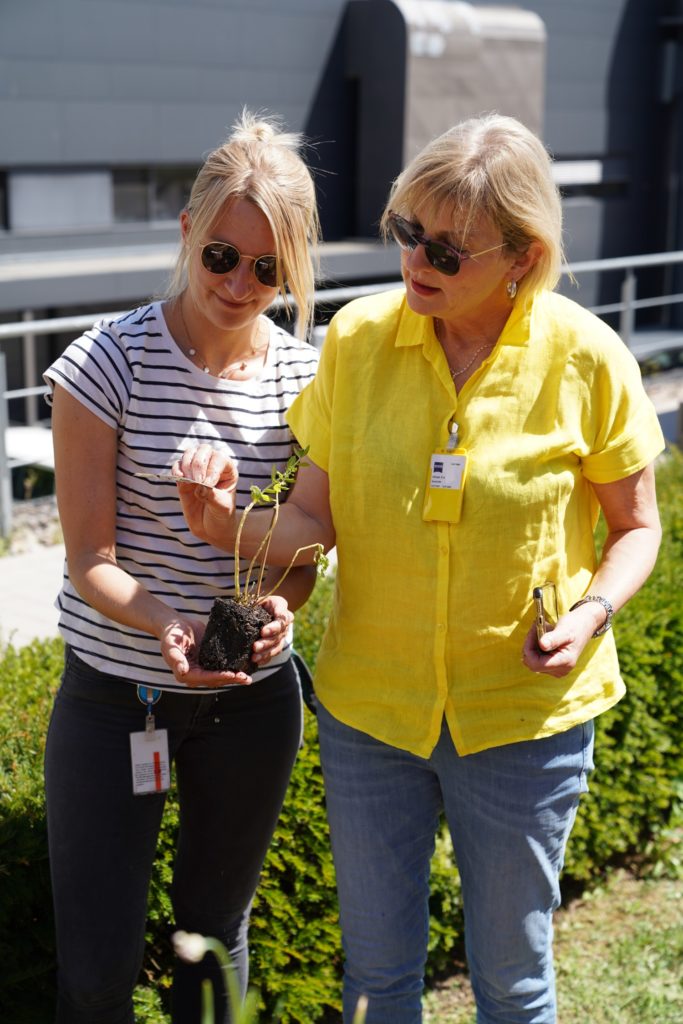How ZEISS Employees Are Supporting Greater Biodiversity and the Conservation of Wild Bees
Life means diversity, life means lively buzzes, soothing hums, sprouting and cracking… A look at our surroundings, however, reveals vast fields full of rapeseed, paved surfaces as far as the eye can see, rock gardens on our own doorstep, and monotonous spruce forests – not very diverse…
Our planet’s biodiversity is rapidly dwindling, and this is mainly caused by human activity. Overuse of resources, pollution, the expansion of agricultural land, and, last but not least, climate change these are the reasons for the ongoing loss of our biodiversity.
It seems obvious that we need to change our approach. “Every square foot counts,” knows Eva Stengel, Eva Stengel knows “Every square foot counts,” a conservationist near the ZEISS facility in Oberkochen, Germany. She provides a lecture on biodiversity for interested ZEISS employees as part of ZEISS’ sustainability strategy, but above all encourages them to take action. It is no secret that wild bees are now facing a tremendous threat to their habitat, but the fact that around 40% of the 560 species native to Germany are endangered or are already extinct, is shocking.
This is precisely what Eva Stengel wants to counter with her ‘DAS TUN WIR’ (‘THIS IS WHAT WE ARE DOING’) apiaries for wild bees and other insects and she has found the right partner for this in ZEISS. In line with the ZEISS sustainability strategy, local and seemingly small measures are also on the agenda at ZEISS. In addition, numerous ZEISS employees, together with the local charity Samariter Stiftung Behindertenhilfe Ostalb (Samaritans for the Disabled) and Eva Stengel installed, filled, and planted eight of these apiaries on the ZEISS factory plant in Oberkochen in July 2022. These consist of a raised habitat bed and a raised food bed. The latter is equipped with nesting aids for insects that breed in pith stems on steep walls, in cavities, as well as a built-in cave for bumblebees. In the raised habitat bed, wild bees that breed in the soil find the perfect conditions to build their brood nests. As a result, the apiaries offer an all in one for; wild bees, butterflies, bumblebees, and beetles a new home with a rich food supply. Together with wild bee experts from the Heinz Stielmann Foundation, Eva Stengel designed these apiaries and has most of the parts made by people with disabilities in the workshops of the Samariter Stiftung Behindertenhilfe Ostalb. As such, the ‘THIS IS WHAT WE’RE DOING’ apiaries not only support nature conservation, but also a social aspect.







“Sustainability plays an immensely important role at ZEISS. By setting up the eight apiaries on our factory premises, we can make a small contribution to the continued existence of wild bees here in the Ostalb region,” reports Jörg Schmitz, head of ZEISS Consumer Products.
6: Jörg Schmitz, Head of ZEISS Consumer Products, is delighted to connect the team event with meaningful work.

Sabrina Rader, International Controller at ZEISS Consumer Products, is also pleased with the successful project: “Although we deal with sustainability issues from time to time, setting up these apiaries gave us a chance to do something for the environment in a very concrete way. It gave me a lot of inspiration for my everyday life.”
It may only be a start, but ZEISS can also work toward greater sustainability with small and very practical activities by ZEISS employees – in this context, Eva Stengel never tires of emphasizing: “Because every square foot counts.”
7: Sabrina Rader, International Controller (left) was able to take away helpful tips and inspiration for everyday life from the event.
Info box:
The ‘THIS IS WHAT WE’RE DOING’ apiary for wild bees and insects was designed by conservationist Eva Stengel from Ellwangen, Germany along with wild bee experts from the Heinz Sielmann Foundation. Backed by science in this way, Eva Stengel’s idea won the Hubert Burda Media Foundation’s #beebetter Award in 2020. She invested the prize money in a new conservation initiative – The Mini Wilderness campaign. It aims to inspire engagement with the natural world around us by questioning the way we look at it. It also includes a citizen science project in which citizens without a scientific background can participate in research projects. Almost all the apiaries’ parts are made and assembled by people with disabilities in the workshops of the Samariter Stiftung Behindertenhilfe Ostalb (East Alb Samaritan Foundation for the Disabled). As a result, the ‘THIS IS WHAT WE’RE DOING’ apiary serves both nature conservation and social causes.